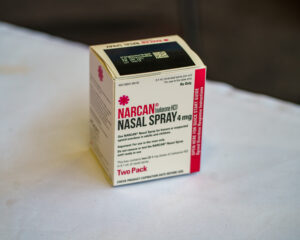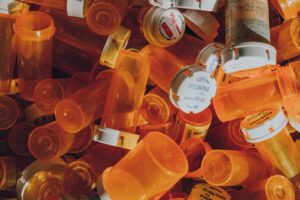Opioid deaths were significant before COVID-19 pandemic and have only accelerated
As the country recovers from the COVID-19 pandemic, the focus and policy actions should now be on a public health crisis that predates COVID and has continued to claim an increasing number of American lives — the opioid epidemic.
The CDC estimates that opioid overdose deaths have totaled 564,000 since 1999-2020 and are accelerating — 80,816 in 2021, an increase of 15%, from 70,029 deaths in 2020.
The U.S. needs a much greater and immediate focus on this serious and growing public health issue that kills tens of thousands of U.S. residents each year and generates billions in costs throughout society.
The economic costs of the opioid epidemic are multi-faceted and exceed $1 trillion
A 2021 CDC review by Luo, Li, and Florence developed and applied a comprehensive framework to identify and quantify the opioid epidemic’s costs (both total and per-capita) by including the following cost factors: substance abuse treatment, criminal justice, reduced quality of life, the value of statistical life lost, healthcare expenditures, and lost productivity costs. The per-capita costs of the opioid epidemic in various regions and states across the country were calculated for both fatal opioid overdoses and opioid use disorders. The team estimated that, as of 2017, the economic costs of the opioid epidemic nationally totaled approximately $1.021 trillion including the costs of fatal opioid overdose ($550 billion) and opioid use disorder ($471 billion).
Sign up for Schaeffer Center news
Recent court settlements have been large but do not effectively address the problem going forward
Since Purdue Pharma began producing its drug OxyContin, other companies in the industry like Johnson & Johnson expanded development and distribution of these harmful opioids. Recently, the national settlement of $26 billion with four major opioid companies (Johnson & Johnson, AmerisourceBergen, Cardinal Health, and McKesson) made headlines, highlighting their role in the illegal and harmful distribution of addictive opioids. However, these settlements primarily focused on the health care costs of the excessive opioid use and do not address billions of dollars in costs in other sectors as identified in the CDC review. And, more importantly, the settlements do address the underlying, on-going causes of the epidemic.
Additional federal funding and comprehensive, multi-level government approach is needed
This public health crisis is large and growing. If we are to address this crisis, additional funding is needed. As a comparison, with respect to COVID-19, the federal government’s agencies have paid out $3.7 trillion (total outlays) and have the total budgetary resources of $4.6 trillion. Accordingly, similar investments must be made for this opioid epidemic that has spanned for over 20 years. Within its discretionary appropriation bills for FY2017 and FY2018, the federal government allocated $3.3 billion and $7.4 billion respectively, a $10.7 billion total. Therefore, it is evident that there must be accelerated spending toward mitigating opioid abuse and overdose deaths that reflect what has been observed with COVID-19 so far.
Examples of what can be done
Local city actions strategically support under-resourced communities
On the local level, the city of Philadelphia made a $20 million investment over five years to reduce opioid abuse. Specific uses of the funding include $750,000 annually for the Police Assisted Diversion (PAD) program, which allows low-level offenders to complete community service instead of being prosecuted. Moreover, to prevent overdoses, every month the city provides a free naloxone training program for residents. Through this initiative, nearly 2,000 people were trained and around 62,000 naloxone kits were distributed. Additionally, 120,000 fentanyl test strips were given as well, and 1,000 people were trained in administrating it.
Although they haven’t been formed yet, the city has been supporting the implementation of Overdose Prevention Sites (OPS) since 2018. At an OPS, people are allowed to utilize their drugs with medical supervision so that they do not overdose, and these individuals can also receive drug treatments and other services like housing support. In the U.S., the first sanctioned OPS opened toward the end of 2021, and within its first three weeks, the OPS program in New York City was able to reverse 59 overdose cases.
State-level programs promote sustainable, large-scale services
The California Department of Health Care Services (DHCS) has been spearheading the California Medication Assisted Treatment (MAT) Expansion Project which is part of their State Opioid Response (SOR) 1 and 2 grants. There is a diverse range of initiatives the state is managing through this funding. These range from programs that directly address the medical sector to those that relate more to the social determinants of health (housing, criminal justice, etc.).
The University of California, San Francisco is administering two of these programs: the California Poison Control System and California Substance Use Line. In the Poison Control System, the university is providing the center’s pharmacists and physicians greater proficiency in treating opioid overdoses and withdrawals as well as starting the use of buprenorphine, a drug that helps with relieving addictions. Moreover, their Substance Use Line which is a 24/7 free service for California clinicians to answer any questions they have about substance use is broadening to cover more departments such as primary, emergency, and mental health care.
Federal funds and partnerships grow state opioid reduction programs
The project grants for the California DHCS projects come at the federal level from the Department of Health & Human Services (HHS) Substance Abuse and Mental Health Services Administration (SAMHSA). In 2022, SAMHSA is providing California with $71,681,936 in substance abuse funds, highlighting the significance of such government investments in mitigating the opioid epidemic’s harms. On the same note, just this May, the Biden Administration announced $1.5 billion in support of SOR programs across the country to properly address opioid addiction and overdoses. Therefore, continued action through such federal-state partnerships can help challenge this epidemic.
Furthermore, these programs do not even have to go through the HHS. As an example, the SUPPORT Act, passed in 2018, gave approx. $3.3 billion over 10 years to spend against the opioid epidemic through government programs. One portion of the act provided $20 million in grant funds to the Department of Labor, so they can support four state government departments (Florida, Maryland, Ohio, and Wisconsin) that assist employers and their employees against opioid misuse through various screening, training, and recovery initiatives.
Overall, it is imperative that such government actions on all three levels: local, state, and federal must be expanded and take place all over the country. This is especially critical for regions and locations that have been more greatly affected by the opioid epidemic. With such strategic government interventions, there is greater progress toward mitigating the economic and health costs of the opioid epidemic.
Pratik Thakur is a senior at the University of Southern California studying Biological Sciences with minors in Health Policy and Economics and a 2022 Leonard D. Schaeffer Fellow in Government Service. He received the USC Provost’s Undergraduate Research Fellowship for the 2021-22 school year to investigate opioid costs and policies.



